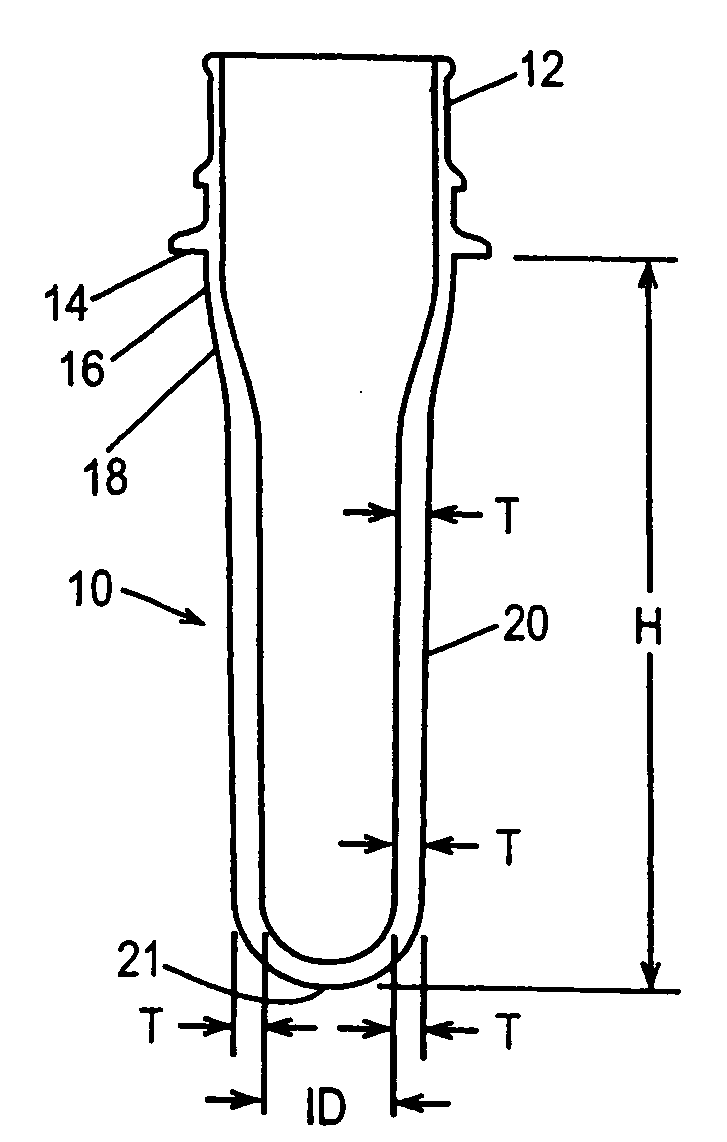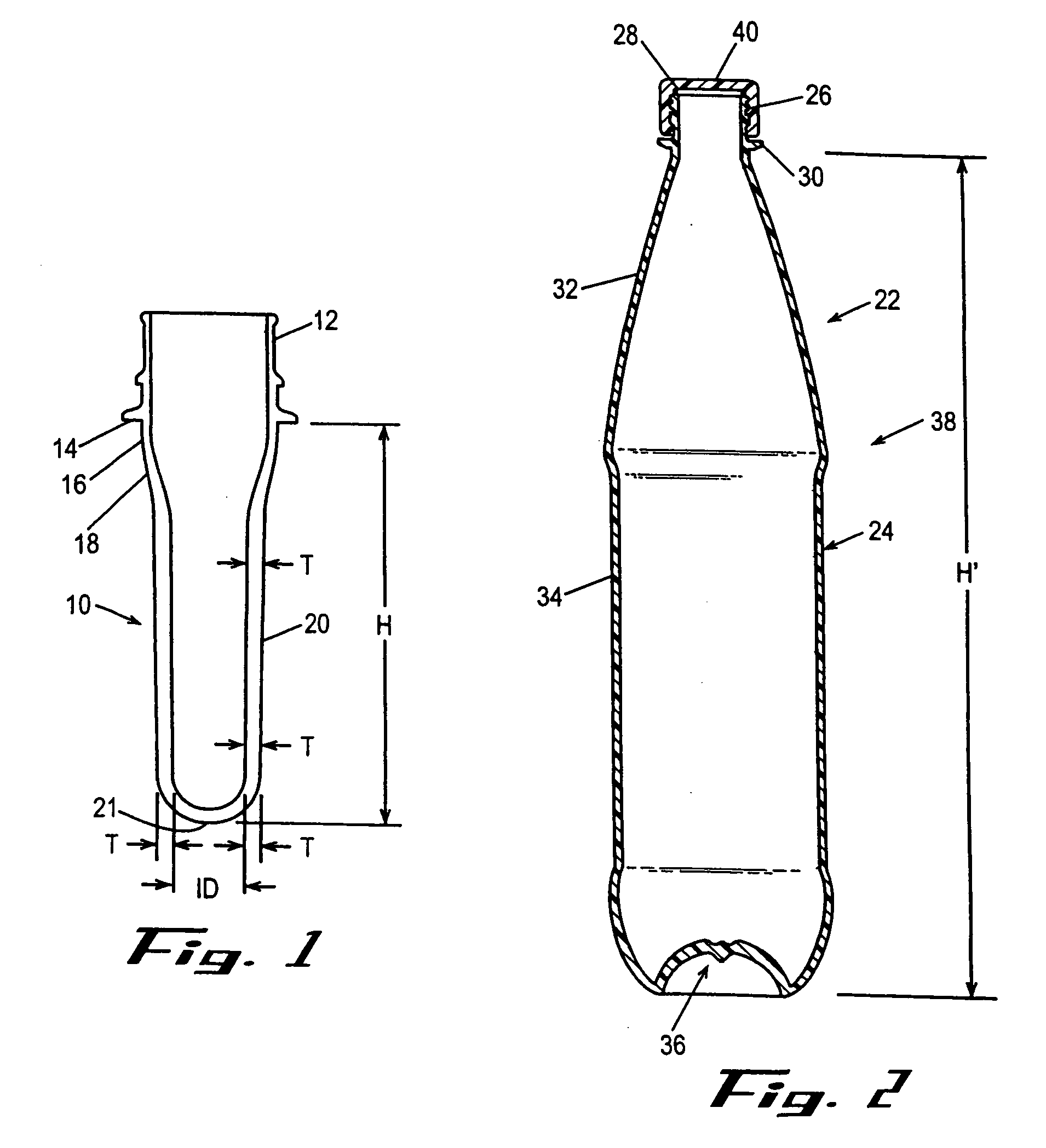Preforms for preparing lightweight stretch blow molded pet copolymer containers and methods for making and using same
a technology of copolymer and packaging, which is applied in the field of preform design and preform, can solve the problems of increasing the interior reducing the height of the beverage container, and undesirable carbonation loss, and achieves the effects of increasing the hoop stretch ratio, increasing the mechanical strength, and increasing the mechanical strength
- Summary
- Abstract
- Description
- Claims
- Application Information
AI Technical Summary
Benefits of technology
Problems solved by technology
Method used
Image
Examples
example 1
[0059] Different PET resins were dried overnight at 135° C. in a vacuum oven to achieve a moisture level below 50 ppm prior to injection molding. The injection molding was performed with a lab-scale Arburg unit cavity injection machine into conventional preform molds using a 25 gram weight preform designed for a 500 ml container with a maximum diameter of 65 mm and a height of 200 mm from below the container finish and having a hoop stretch ratio of 5.5 and an axial stretch ratio of 2.6. The preforms were then free blown to bubbles to determine the stretch ratio of each polymer. Free blow was performed on each preform variable and the bubbles were blown at temperatures of 100° C. and 90 psi. The free blow volume is an indication of the natural stretch ratio of the PET, and is recorded for each bubble. The higher the free blow volume, the higher the natural stretch ratio of the PET.
TABLE 1Free blow results of the LNSR PETcopolymer and the CG PET CopolymerResin Compositionmole %mole...
example 2
[0061] A 26.5 g preform and a 23-g preform were designed for 600 ml PET bottle. The stretch ratios of the two preform designs are shown in Table 2. The 26.5 g preform was obtained through a core change from a 28-g preform used to produce the 600 ml bottles.
TABLE 226.5 g preformcore change design23 g preform(comparative)invention designHoop stretch ratio4.675.98Axial stretch ratio2.802.60Overall stretch ratio13.115.5
example 3
[0062] A commercially available grade PET suitable for use in preparing a CSD container with an IV of 0.84 was dried overnight at 135° C. in a vacuum oven to achieve a moisture level below 50 ppm prior to injection molding. This resin is considered to be “conventional” according to the present disclosure because this resin is not treated to remove residual DEG derived from the manufacturing process. The injection molding was performed with a lab-scale Arburg unit cavity injection machine into both 26.5 g and 23 g preform molds. The preforms were then blow molded into 600 ml contour bottles with a Sidel SBO 1 machine.
PUM
| Property | Measurement | Unit |
|---|---|---|
| Temperature | aaaaa | aaaaa |
| Length | aaaaa | aaaaa |
| Length | aaaaa | aaaaa |
Abstract
Description
Claims
Application Information
 Login to View More
Login to View More - R&D
- Intellectual Property
- Life Sciences
- Materials
- Tech Scout
- Unparalleled Data Quality
- Higher Quality Content
- 60% Fewer Hallucinations
Browse by: Latest US Patents, China's latest patents, Technical Efficacy Thesaurus, Application Domain, Technology Topic, Popular Technical Reports.
© 2025 PatSnap. All rights reserved.Legal|Privacy policy|Modern Slavery Act Transparency Statement|Sitemap|About US| Contact US: help@patsnap.com


